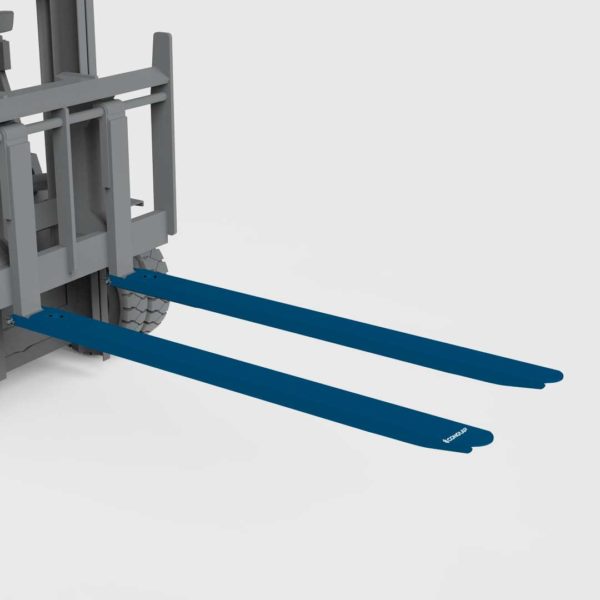Maximizing Lift: The Ultimate Guide to Forklift Extensions
Maximizing Lift: The Ultimate Guide to Forklift Extensions
Blog Article

Forklift extensions are an essential tool for enhancing the capability of your forklift when handling larger or heavier loads. In various industries, space and efficiency are crucial, and sometimes standard fork lengths just don’t cut it. This is where forklift extensions come into play, allowing operators to tackle tasks that would otherwise be impossible or unsafe with standard equipment.
Understanding the benefits and applications of forklift extensions can significantly improve your operations, as well as promote safety and efficiency on the job site. Whether you are lifting oversized pallets or awkwardly shaped materials, these extensions provide the additional reach and stability needed to maximize lift capabilities. In this guide, we will explore the various types of forklift extensions, their advantages, and tips for safe usage to help you optimize your lifting operations.
Fork Truck Accessories
Understanding Forklift Extensions
Forklift extensions are essential tools that enhance the functionality of standard forklifts. They are designed to increase the lifting capacity and the reach of a forklift, allowing operators to handle larger loads or access difficult-to-reach areas. By extending the fork arms, these attachments enable safe and efficient lifting of materials that would otherwise be beyond the forklift's standard capabilities.
When selecting forklift extensions, it is crucial to consider the specific requirements of your operations. Different types and sizes of extensions are available, each suited for particular tasks. It's important to choose an extension that matches the load capacity of the forklift and complies with safety regulations to prevent accidents during operation.
Proper installation and maintenance of forklift extensions are vital for ensuring their longevity and performance. Operators should follow manufacturer guidelines for installation and regularly inspect the extensions for wear and damage. By doing so, companies can maximize efficiency, minimize downtime, and maintain a safe working environment.
Types of Forklift Extensions
Forklift extensions come in various types, each designed to cater to specific lifting needs and scenarios. The most common type is the standard forklift extension, which typically adds a few additional feet to the existing forks. This type is useful for handling longer loads that standard forks cannot accommodate. Standard extensions are often used in warehouses and construction sites where lengthening the reach is necessary without impacting the load's overall stability.
Another type of forklift extension is the slip-on extension. These extensions are designed to be easily attached to the existing forks, allowing for a quick and seamless way to increase lift length when needed. Slip-on extensions are particularly advantageous in environments where loads vary significantly, as they provide flexibility and adaptability for different lifting tasks. Their ease of use helps operators save time during loading and unloading processes.
Lastly, there are specialized forklift extensions that cater to specific industries or materials. For instance, there are extensions designed for handling pallets that require a unique fork profile to prevent damage. Additionally, there are extensions that can accommodate extremely heavy loads or allow for side-lifting capabilities. These specialized extensions ensure that specific industry demands are met while maximizing efficiency and safety during material handling tasks.
Benefits of Using Extensions
One of the primary advantages of using forklift extensions is the increased lifting capacity they provide. By extending the reach of the forks, operators can easily handle larger or bulkier loads that would otherwise require specialized equipment. This flexibility allows businesses to optimize their operations by using standard forklifts for a wider variety of tasks, reducing the need for investing in additional machinery.
Another significant benefit is the enhanced safety that extensions offer. Properly fitted extensions help distribute the weight of the load more evenly, reducing the risk of tipping or loss of control. By allowing for better visibility and maneuverability, extensions can also minimize the chances of accidents in busy warehouse environments, ensuring a safer working atmosphere for all employees.
Lastly, utilizing forklift extensions can lead to significant cost savings over time. Rather than purchasing new forklifts specifically designed for handling larger loads, companies can simply invest in extensions that adapt their existing equipment. This solution not only saves money upfront but also maximizes the utility of the current fleet, enabling businesses to operate more efficiently without sacrificing performance.
Safety Considerations
When using forklift extensions, it is crucial to ensure that the equipment is compatible with the forklift and rated for the load it will be handling. Extensions can alter the center of gravity and load capacity, potentially leading to instability. Operators should always verify that the combined weight of the load and extensions does not exceed the forklift’s safe lifting capacity.
Proper training is essential for anyone operating a forklift with extensions. Operators must understand how to use extensions safely and the specific challenges they introduce. This includes recognizing how extensions affect visibility, maneuverability, and the need for increased caution when navigating tight spaces or uneven terrain.
Additionally, the work environment must be assessed for safety when using forklift extensions. Clear pathways should be established, and potential hazards removed to prevent accidents. Operators should communicate effectively with team members and signal properly to ensure everyone is aware of the extended load, which helps maintain a safe working area for all involved.
Report this page